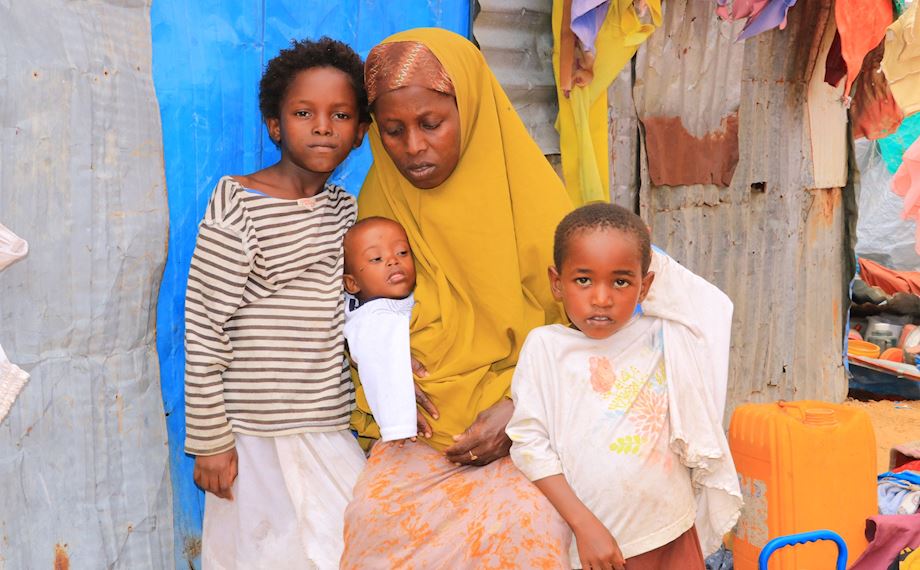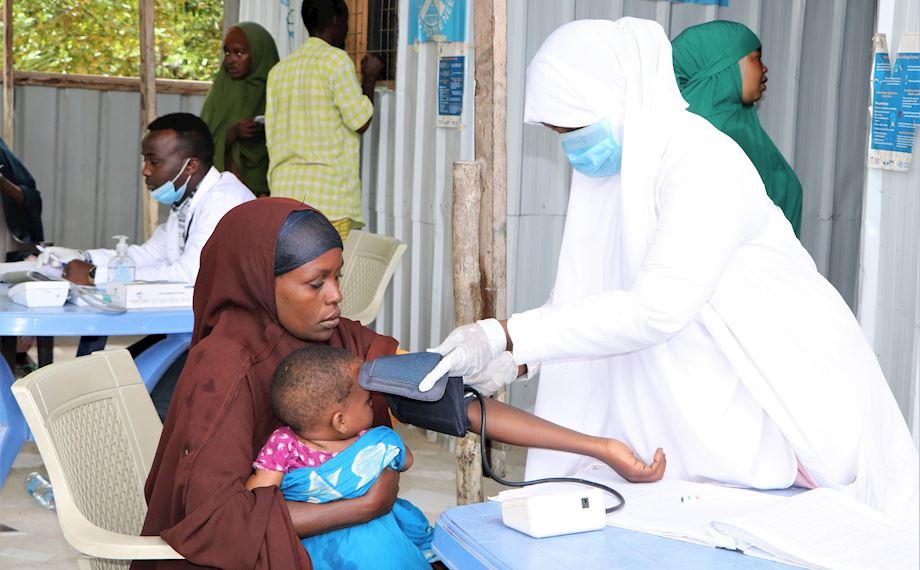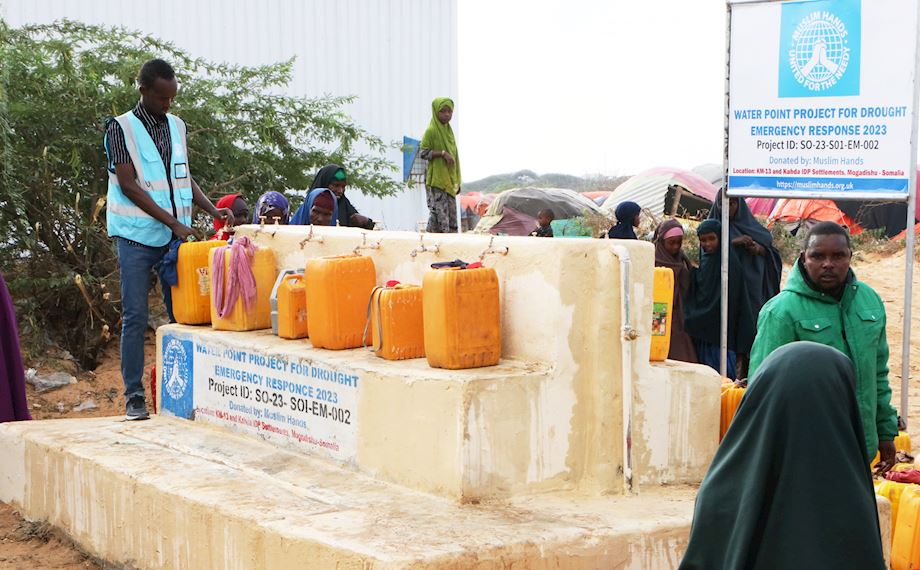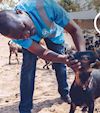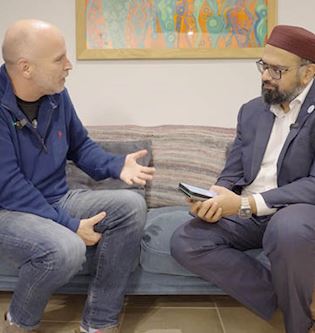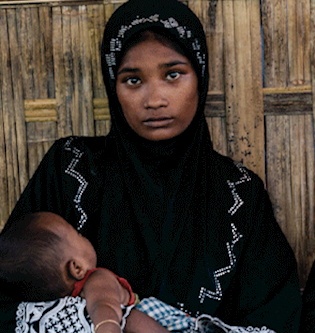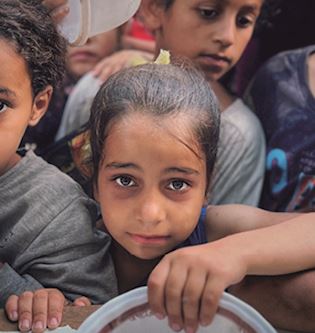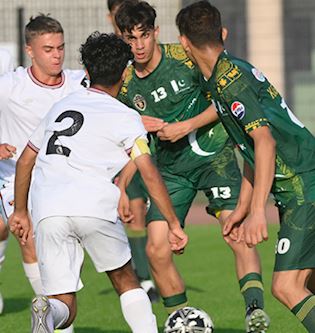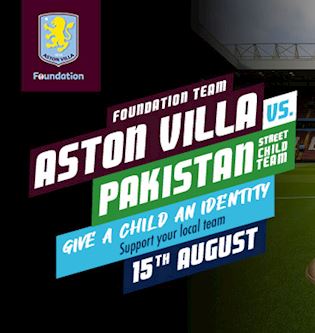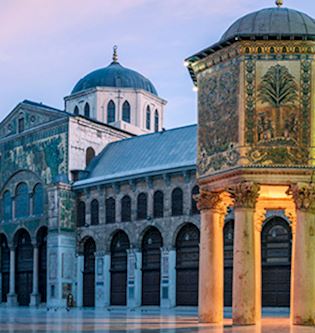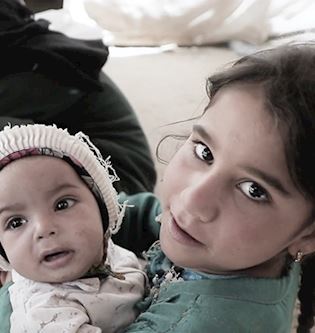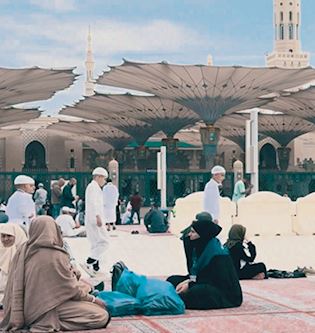Explained: Drought and Displacement in Somalia

Somalia is currently facing its worst drought in half a century. This emergency began amid an existing humanitarian crisis - millions of Somalis were suffering from climate shocks, disease outbreaks and decades of conflict, leading to widespread poverty and displacement. The latest drought has worsened an already dire situation.
This article will explain everything you need to know about the emergency, including: the scale of the drought, the overall impact of climate change on Somalia, its famine in the context of global inflation, displacement in Somalia and its effect on women and children and, finally, our work on the ground and how you can help.
1. The worst drought since 1981
The Horn of Africa is the easternmost extension of the African continent. It is currently suffering from the worst drought in 40 years. [UN]
This article will focus on the situation in Somalia. The country has now seen four consecutive failed rainy seasons. This means that the population were expecting enough water for their daily needs as well as for their crops, but they have been forced to endure massive water shortages.
So far, a staggering 7.8 million people have been impacted by the drought emergency. [OCHA]
In 2022, some parts of Somalia received light to moderate rains, but the amounts are insufficient to alleviate the current drought conditions. The drought emergency is likely to deteriorate further. [OCHA]
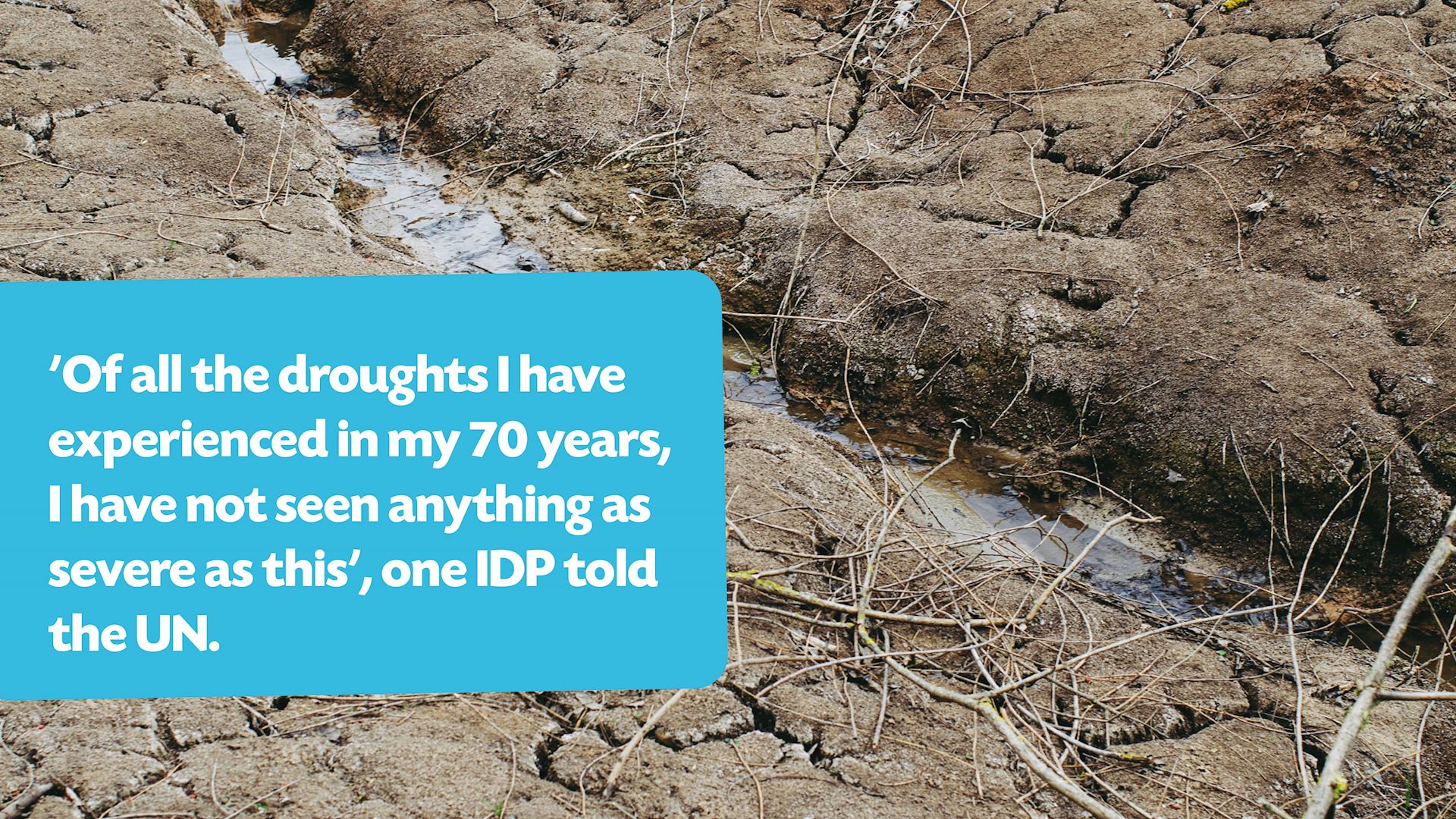
What does it mean to be impacted by drought?
- Existing water sources have dried up, leading to crops withering and livestock dying.
- People must rely on water truckers, which often transport water at long distances. For example, in parts of the Badhan district, water is trucked from 130 kilometres away. [OCHA]
- The price of water has increased dramatically. In some parts of Puntland, the cost has tripled.
- Lack of safe water leads to increased cases of Acute Watery Diarrhoea, cholera and acute malnutrition, especially in children.
Families who have lost their water sources, their livelihoods and their food supply are leaving their homes behind, hoping to find food and work in major cities. They have become IDPs (internally displaced people) in order to survive.
2. Climate change, agriculture and livelihoods in Somalia
Even before the latest drought, the people of Somalia had been tested with the devastating impact of climate change.
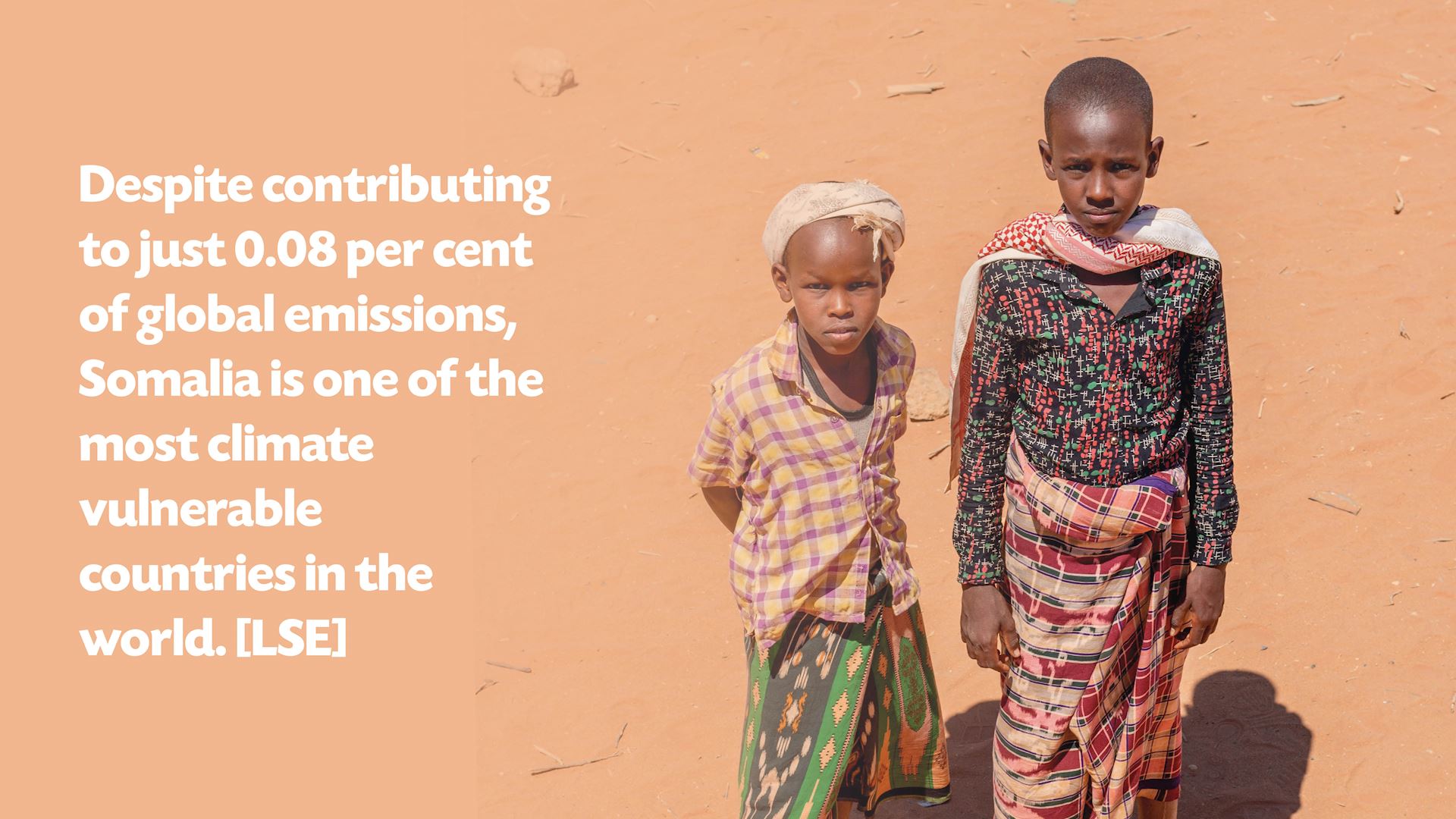
Most of Somalia's population live in rural areas as nomadic or semi-nomadic pastoralists. The agricultural economy accounts for two-thirds of its GDP. People mainly grow maize and sorghum - both of which require rain-fed and irrigated conditions. Commercial crops include sugarcane, bananas and rice, which are cultivated along the two rivers in the south.
Somalia heavily depends on a thriving agriculture - yet its farming communities face regular climate shocks, including drought and flash flooding. The recurrent nature of these shocks leaves little time for people to recover. For example, Somalia used to have better flood defence systems, but they have been damaged and weakened by worsening floods.
Experts have been predicting even worse climate shocks - which we have seen this year, in the worst drought since 1981.

As climate change continues to worsen, instability in Somalia is increasing. Already, millions of people are internally displaced - without livelihoods, shelter or any assets, they are dependent on humanitarian aid to survive.
3. Displacement - stories from the ground
The latest wave of displacement has seen over 68,000 Somalis leaving their homes in search of water, food and pasture. 80% are women and children. [OCHA]
Our UK team recently visited Somalia and spoke to some of these displaced families. Rather than focusing on these overwhelming numbers, we’d like to introduce you to two of these women so you can hear their stories in their own words.

Fadumo is 33 years old and has ten children. The eldest is 17 and the youngest is only one-month old.
Fadumo has witnessed the effects of drought all her life. Born in Baidoa, her family moved to Mogadishu in the 1990s to escape the famine and drought which was destroying the area. After the drought ended, they moved back to Baidoa - and now Fadumo has once again moved to Mogadishu because of drought. Her father was a farmer when she was young, but the drought impacted his livelihood.
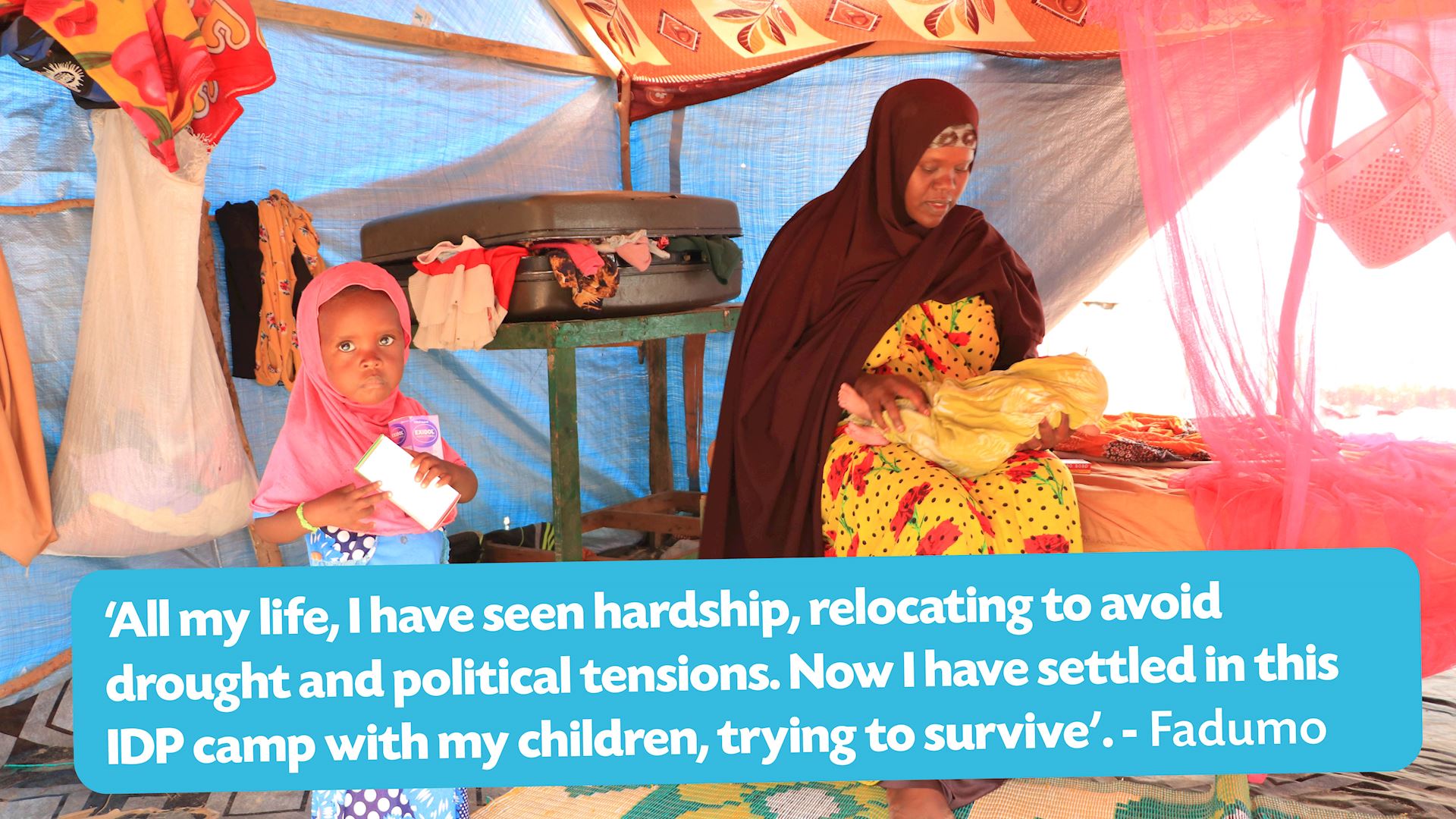
'I have witnessed many hardships and never enjoyed life', Fadumo told our team. Instead, she has constantly been on the brink of survival, 'My life did not turn out how I envisioned it. I hope Allah removes the hardship for us and sends us relief'.
Fadumo hopes her children will have a better future than her - but with worsening climate change, she doesn't know if that will be possible. Due to the current drought, more than 400,000 school-aged children have been displaced [OCHA] - and education in IDP camps is limited. In rural areas, less children are going to school and 158 schools have been closed across the country. Drought, famine and displacement are putting a generation's future at risk.
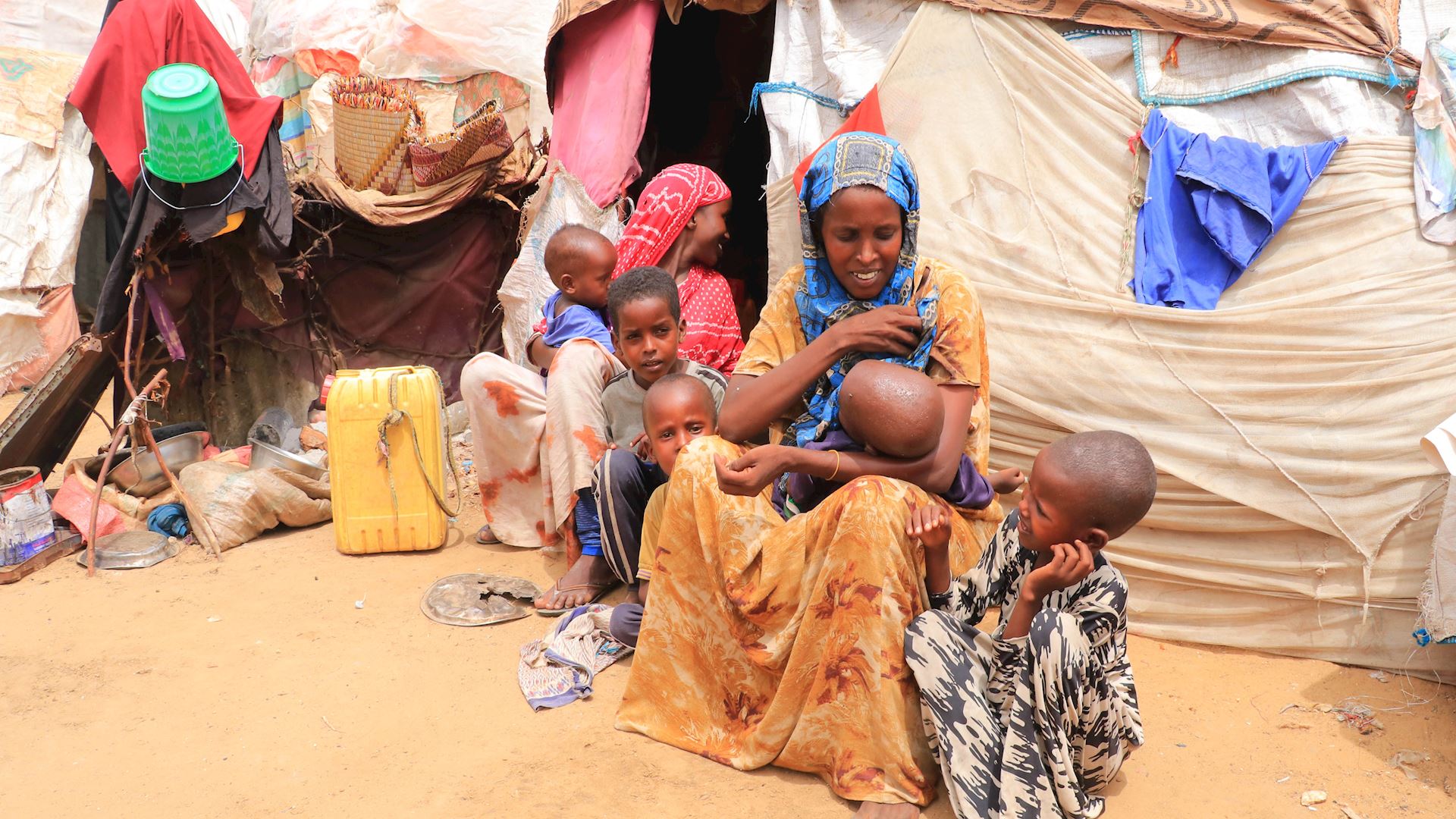
Our team in Somalia also spoke to Halima Ali, who emphasised how difficult it was to leave her home with eight children. They walked 125 kilometres over eight days to get to Mogadishu, often sleeping by the side of the road. They were forced to make this journey after her husband lost his job, because the farmer could no longer afford to pay labourers.
After a month of living in the camp, Halima's family are in a dire situation. Three of her children are severely ill due to malnourishment, but she doesn't know what to do. As her husband has not found a job yet, they will be stuck in this situation for the foreseeable future.
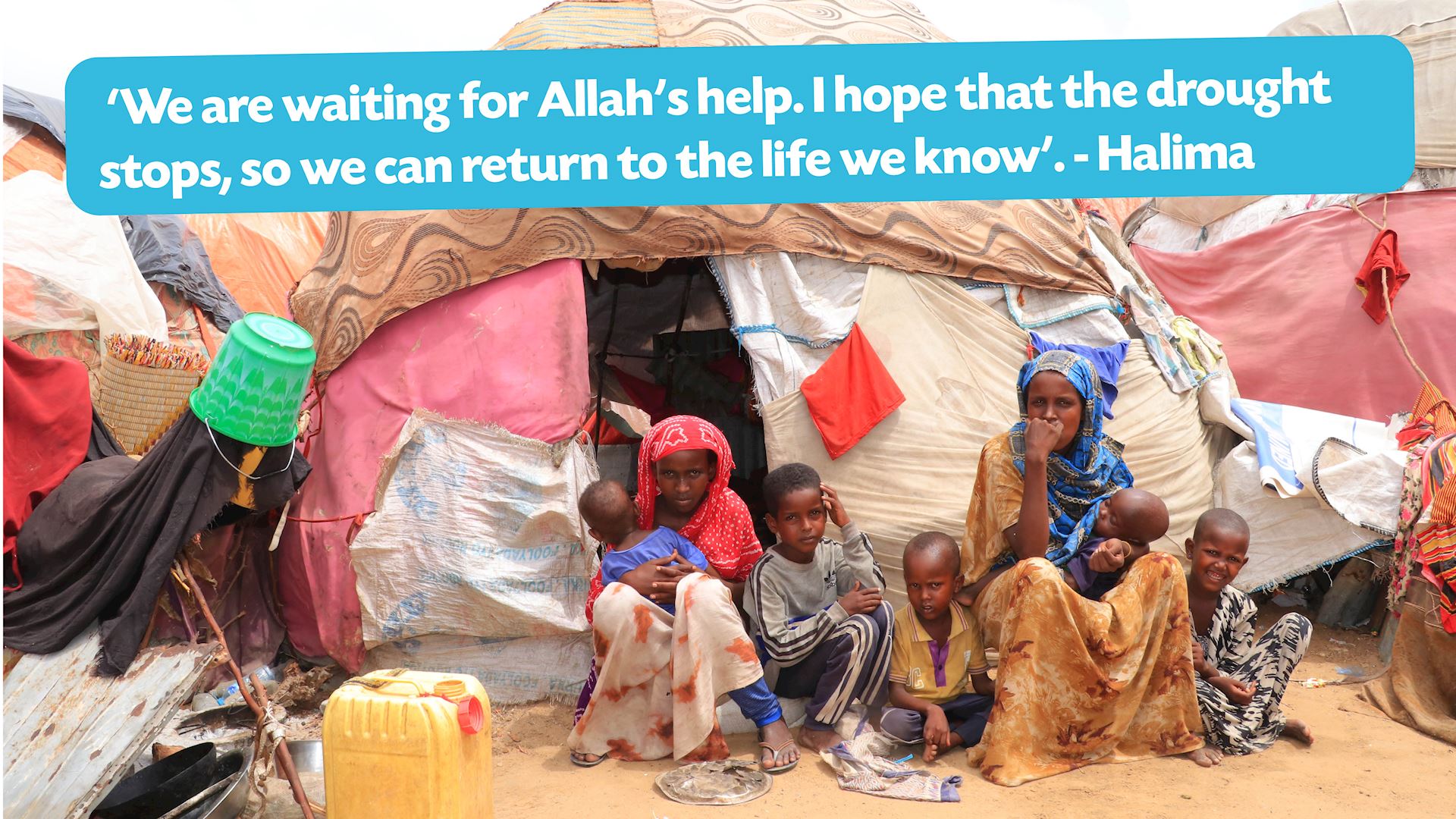
4. Skyrocketing food prices and famine in Somalia
Halima's story highlights that, even if families leave their devastated livelihoods behind and move to major cities, it is still difficult to access food and water. Global food prices are close to record highs, including the price of staple grains and cooking oil, and Somalia is also being impacted.
Fadumo told us, 'Everything before the drought was relatively cheap – but now the price of vegetables, rice, and bread has risen. We don’t make enough money to buy food. The children are hungry and I am hungry'.
Many women like Fadumo told our team that they were in debt due to borrowing money for food. Deeqo, for example, said that her debt to a shop owner keeps increasing because of inflation, but she can't pay it back with her meagre wages.
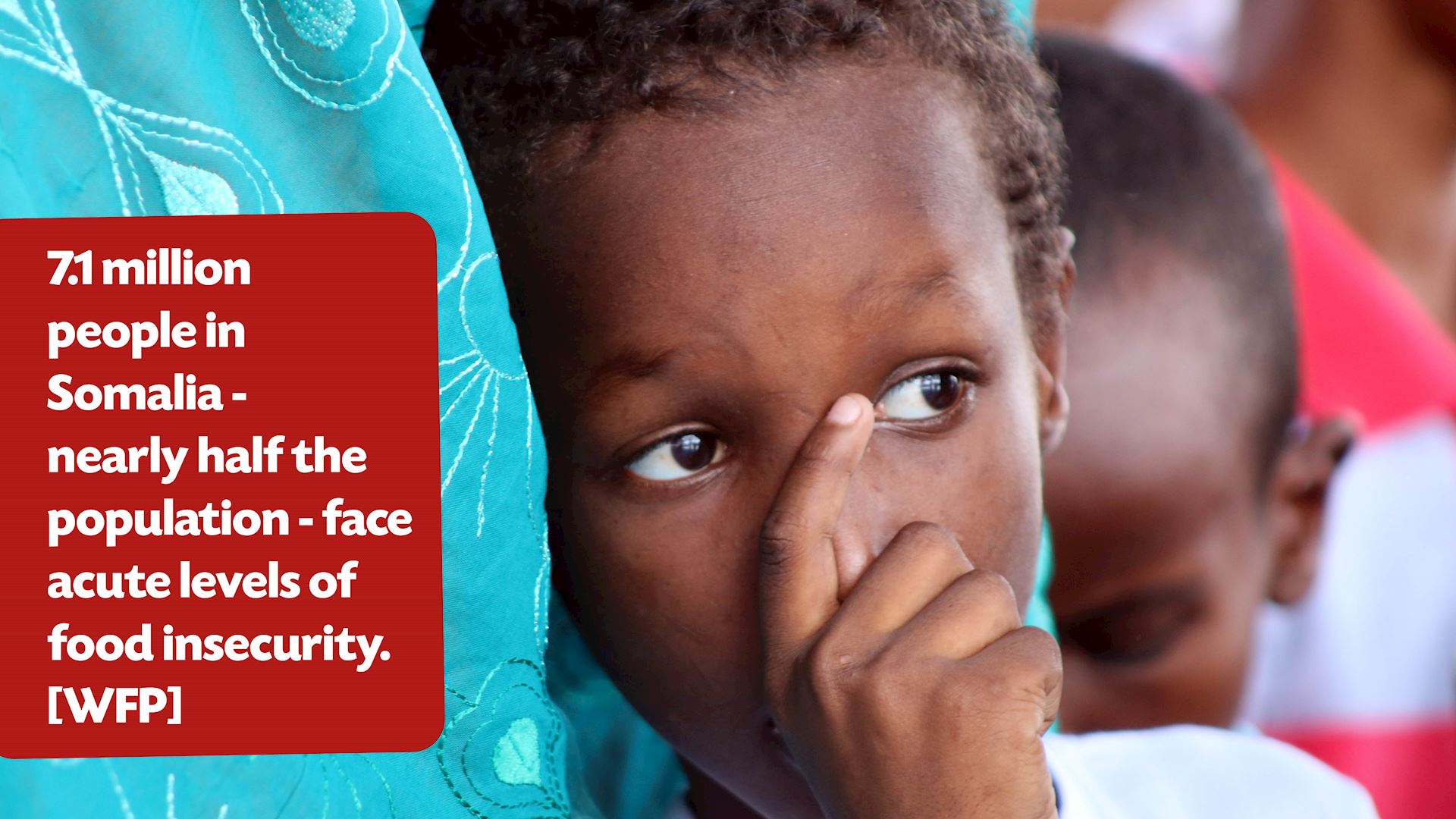
This is not the first time we have heard such overwhelming statistics from Somalia. In 2011, famine killed 260,000 people - half of them were children under the age of six. [WFP]
We cannot allow this tragedy to happen again.
5. Providing food, water and medical care in Somalia
We are currently running five emergency projects in Somalia in response to the crisis.
Firstly, our Motherkind clinics remain open to provide essential healthcare to women and children. One of our doctors, Dr Hawo Abdullahi, emphasised that this clinic is on the frontlines of saving lives, now more than ever. She has seen a massive increase in IDP mothers visiting the clinic over the last three years, with their main concerns being lack of food and shelter.
One of Dr Hawo's patients brings her two children to Motherkind and she said she could not imagine what she would have done if the clinic was not free. 'Everything is already expensive, but they provide us with free medicine'.
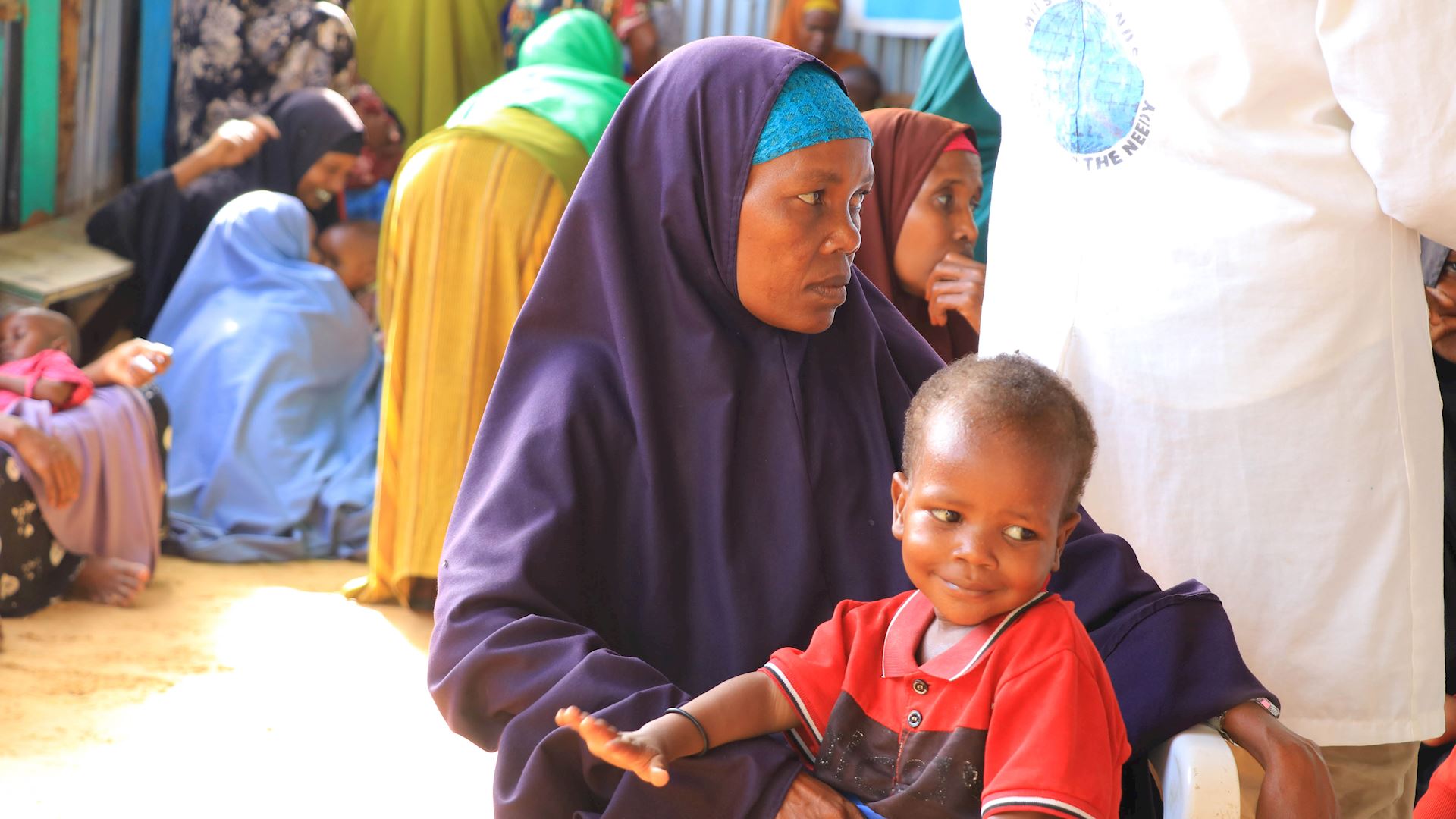
Dr Hawo also told us that girls and women are the most vulnerable in times of emergency. Their shelters are made of cloth and do not have a door, so they are not protected from attacks and kidnapping. They are also at risk of sexual violence when they leave the shelter to collect water or food. Dr Hawo described meeting a 14-year old rape victim who was attacked on her way to a shop to buy food. At the Motherkind Clinic, she was provided with immediate counselling. Dr Hawo explained that the clinic needs to increase its capacity to help these women and girls.
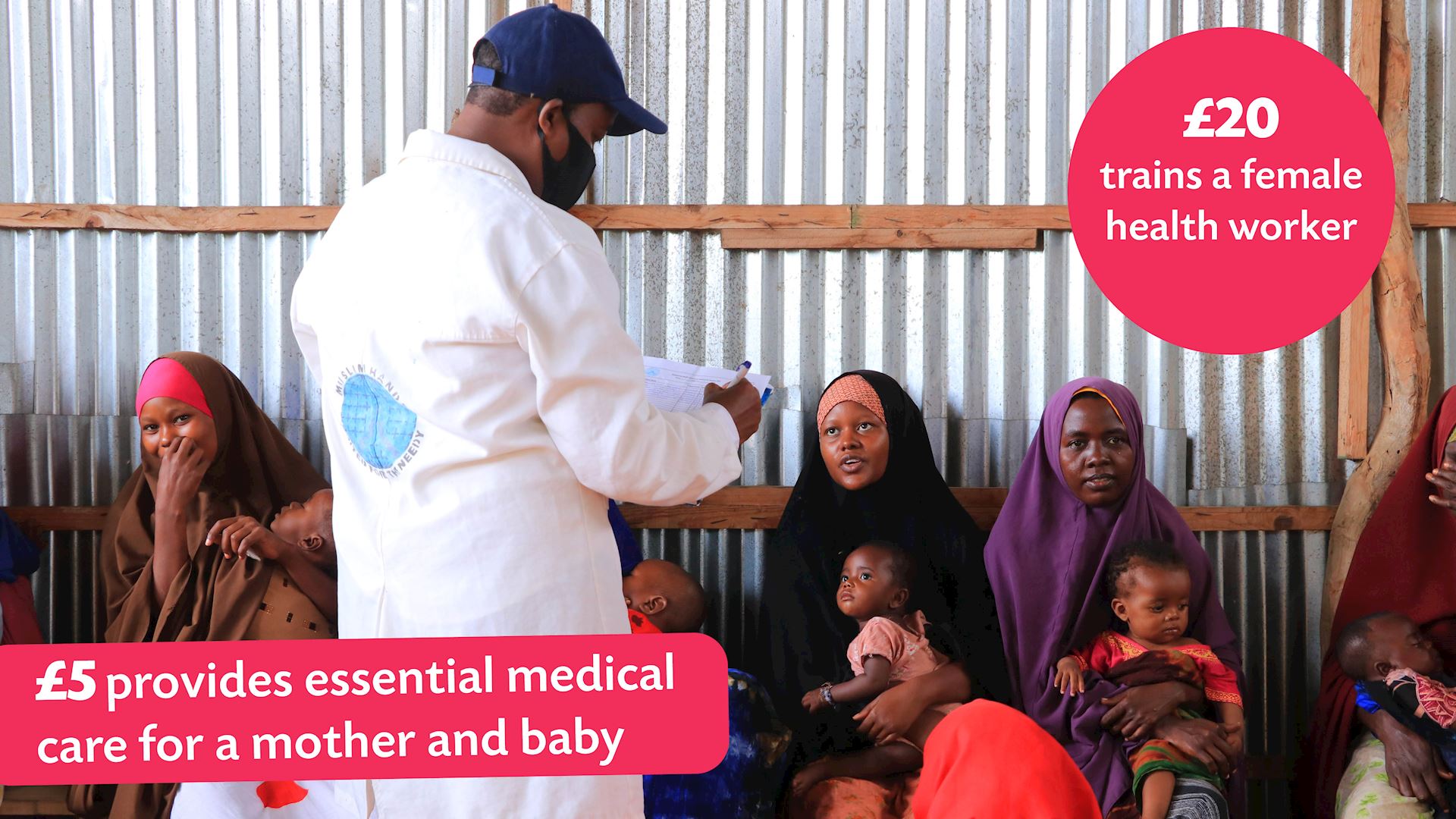
As well as running the Motherkind clinic, we are also distributing emergency food parcels to displaced families. Each parcel contains a month's worth of food, including rice, flour, beans, maize and cooking oil. Initially, we are distributing these monthly food parcels to 700 families - but with your help, we can expand our reach.
Moreover, we are providing water truckers in the IDP camps, sending three trucks per day to provide families with safe water. Each truck holds 20,000 litres of water, meaning over 1.8 million litres of fresh water will be given to the camp in a month.
In addition to these emergency water truckers, we are rehabilitating two community wells in the Berdale and Marko districts to provide clean water to 50,000 people and 300,000 livestock. By installing solar panels and constructing a water tank, we will reduce the massive water shortages in the region, enabling families to collect water round-the-clock for 15 years. This will also help them retain their land and livelihoods and prevent them from getting displaced.
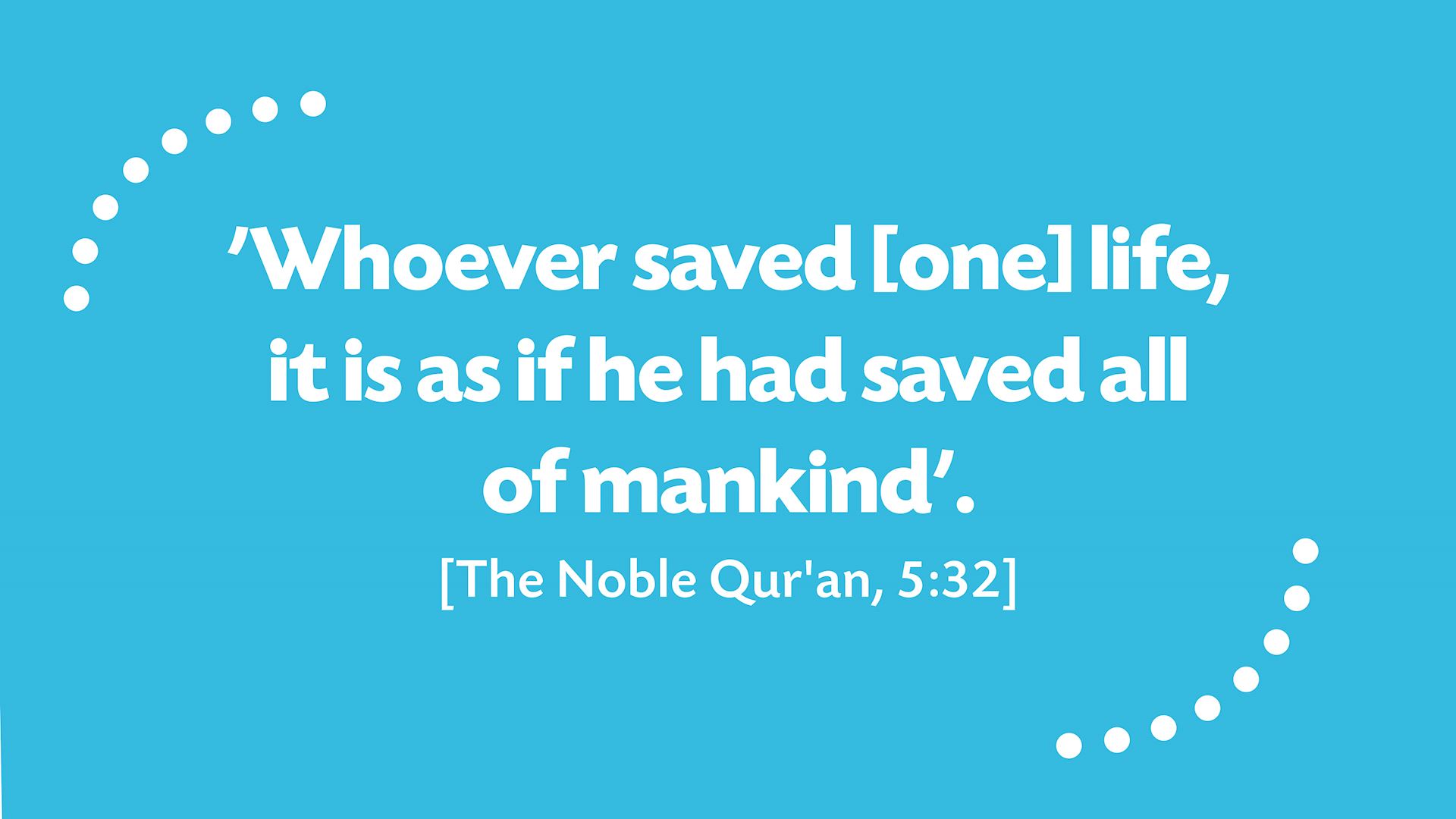
We urgently need your help to run these life-saving projects in Somalia. You can give any amount to our Somalia Emergency Fund to support this vital work, helping families cope with the devastating impact of drought and displacement.
Donate now to save lives.





